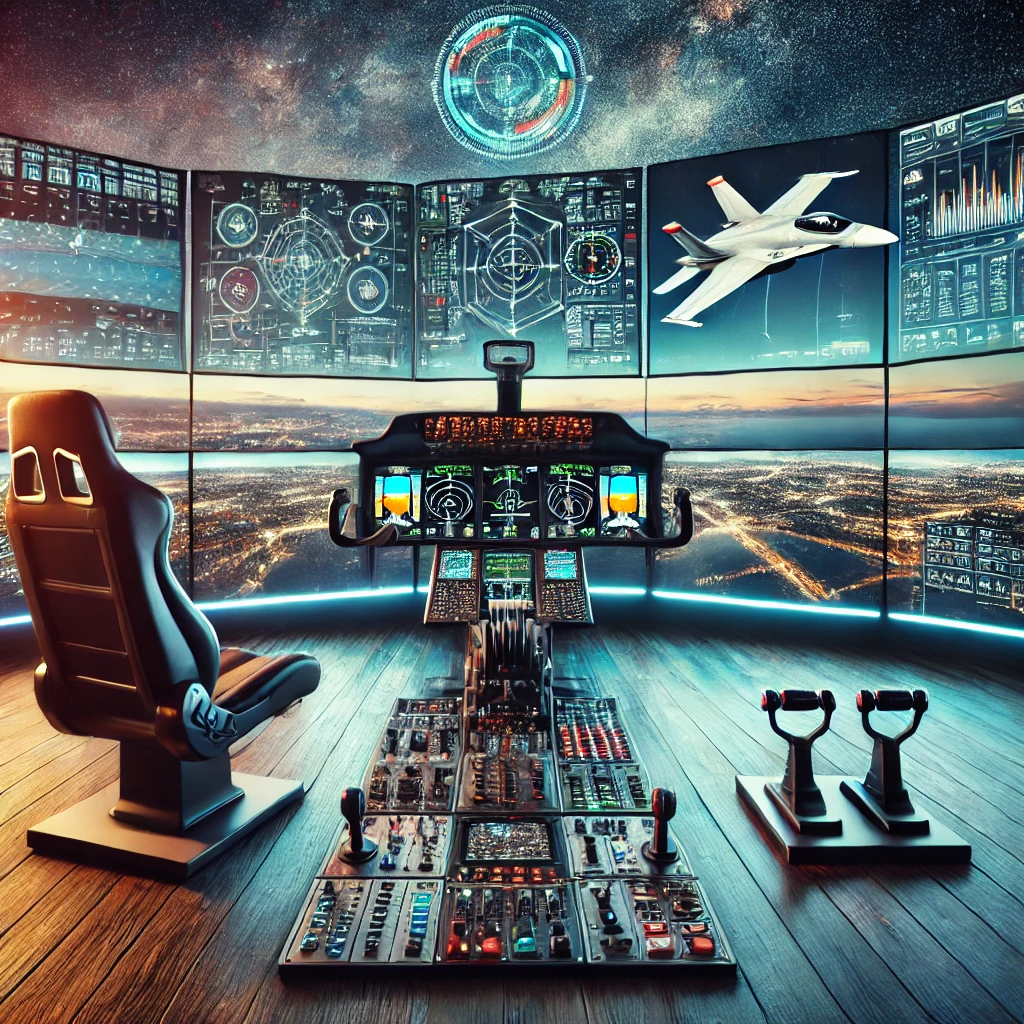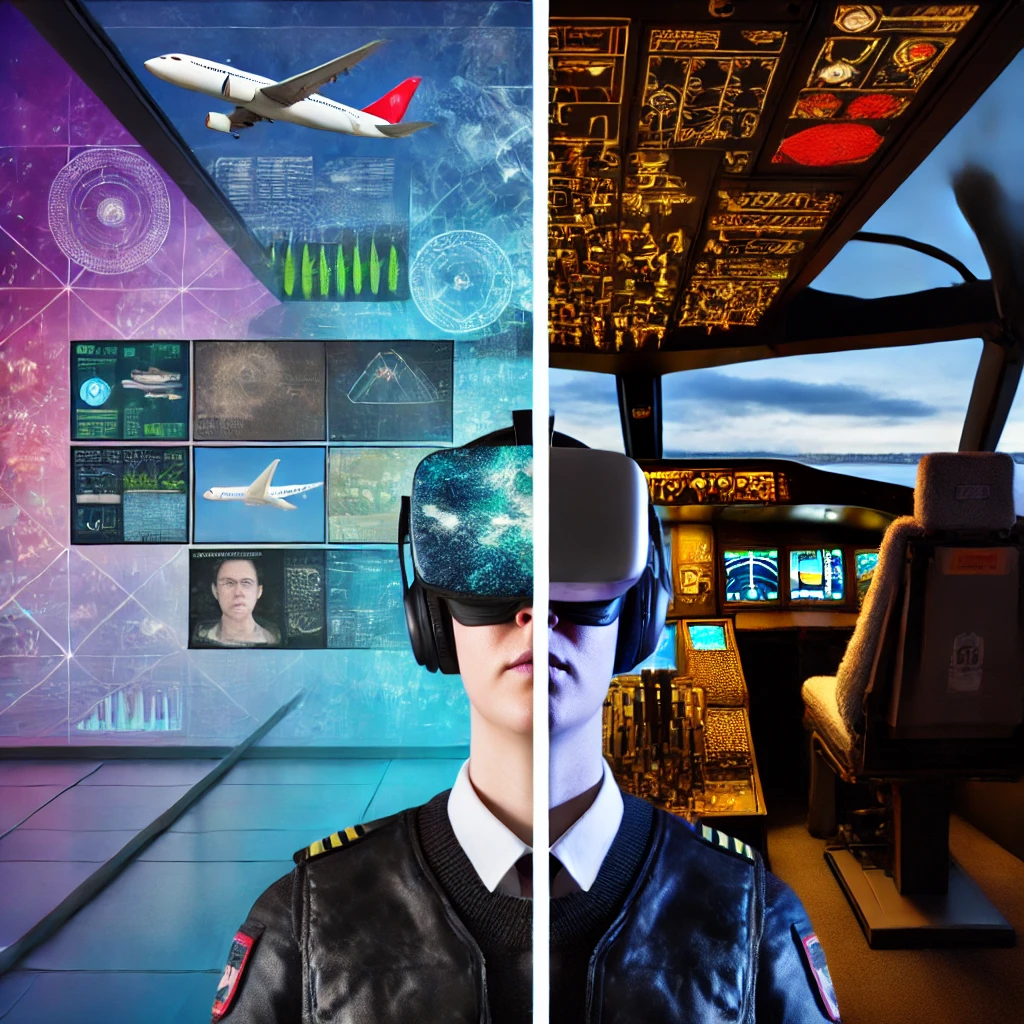Flight Simulator Vs. Real Life – Comprehensive Pilot Training Guide:

I’m in the cockpit, my hands steady on the controls. But this time, I’m not thousands of feet above the earth; I’m firmly grounded in front of my computer, immersed in a virtual flying experience. The concept of flight simulators captivates, and it’s not without reason. These sophisticated systems provide an invaluable bridge between theoretical knowledge and the real-world skies, allowing us to “fly” without ever leaving solid ground.
Flight simulators are more than just a training tool; they’re a necessary component in developing piloting skills in a controlled environment. But let’s be honest, they have their limitations. As we delve into how simulators shape aviation training, it’s vital to highlight what sets virtual flights apart from hands-on flying through unpredictable skies.
If you’re aspiring to become a pilot or you’re deeply passionate about aviation, gaining a solid grasp of this balance is essential. It’s about understanding not just how simulators work but why they’re indispensable—and where reality takes the reins. This journey blends technology, precision, and adrenaline—a thrill you can taste without ever leaving the ground.
Technological Fidelity: Replicating the Sky’s Complexity:
Flight simulators have come a long way, achieving stunning levels of accuracy that often blur the line between virtual and real-world experiences. Let’s explore the intricacies of how these systems replicate flying and where, even with their brilliance, they inevitably fall short.
Today’s simulators rely on high-powered computational models that replicate true flight physics with remarkable accuracy. Sophisticated aerodynamic algorithms are used to simulate an aircraft’s interaction with air currents and respond to pilot controls. Turbulence, wind shear, and complex weather dynamics—these are simulated to great effect, providing pilots with indispensable training scenarios.
Then there’s the cockpit itself, recreated in extraordinary detail. It’s here that simulators excel: every switch, button, and system mirrors the real deal. Navigation panels, engine controls, avionics—these detailed recreations serve one crucial purpose: to instill a reflexive familiarity in pilots, giving them the confidence to operate real aircraft seamlessly.
However, no simulator can completely replicate the “seat-of-the-pants” sensations—like the tactile feedback of aircraft controls or the feel of turbulence rolling through the cabin. These sensory cues, integral to piloting, still require real-world flight time to master fully.
Extreme weather scenarios and system failures present another challenge. Simulators can model these situations but cannot fully capture the unpredictability and subtle sensory nuances of a real-world emergency. So while technology advances quickly, certain aspects of flying remain deeply rooted in the tangible, unquantifiable realities of piloting.
For a deeper dive into the cutting edge of flight simulation technology, I’d recommend exploring the Microsoft Flight Simulator official site.
Psychological and Physiological Aspects: Simulations vs. Real-Life Flying:
Ever wonder how virtual flight measures up against the real skies when it comes to human experience? Sure, there’s psychological pressure in a simulator, but it doesn’t quite match the visceral intensity of real-world piloting. Thousands of feet above the ground, with lives depending on your decisions, every thought and movement is amplified. Simulators can’t fully replicate the rush of adrenaline and high stakes that come with actual flight.
Stress management, rapid decision-making, and dealing with unexpected challenges are all part of the job. Simulators allow pilots to practice without fear of real-world consequences, but does the lack of genuine risk dilute their response under pressure? It’s not a black-and-white issue, but the presence of real-world stakes undoubtedly shifts the psychological dynamic in ways only actual flight can evoke.
Let’s also consider the body’s reaction. Real-life pilots deal with G-forces, vibrations, and other physical cues, none of which can be completely duplicated in a simulator. The visceral feedback—like the weight of controls—provides a critical layer to piloting skills, making it difficult for simulators to match the physical aspects of flight seamlessly.
While simulators have made strides in creating realistic scenarios and unexpected challenges, they can’t replicate every nuance of real-world unpredictability. Can a simulator truly capture the complexity of an emergency landing in turbulent weather? Not fully, but they’re closing that gap as technology continues to evolve.
For an in-depth look at how flight simulators use aerodynamic principles, check out NASA’s aviation education.
The Cost and Accessibility of Flight Training:
One question that often pops up: how do the costs compare? This journey to becoming a licensed pilot isn’t just a test of skill and commitment—it’s a financial investment. Let’s weigh the monetary aspects of simulators against traditional flight training.
Flight simulators offer a cost-effective training solution. No fuel. No wear-and-tear. No exorbitant maintenance fees. For aspiring pilots and flight schools, this is a massive advantage. Traditional training, however, comes with high operational costs for aircraft, insurance, and maintenance—all of which can be unpredictable and burdensome.
Accessibility is a game-changer here. Simulators have democratized pilot training, making it more attainable for people who previously saw it as beyond their reach. This opens doors for broader participation in the field and reduces cost barriers to developing skills, without compromising quality.
And there’s the green aspect to consider. In an era where sustainability matters more than ever, simulators offer an eco-friendly option by reducing emissions and fuel usage. It’s a step forward in training without the environmental toll of traditional flying hours.
Ultimately, striking a balance is key. There’s synergy when real-world experience is combined with simulation, leading to more capable and prepared pilots. Transitioning from controlled environments to actual skies is a critical component of a comprehensive pilot training approach.
The Future of Flight Training: Blending Reality and Simulation:

As technology evolves, the line between flight simulation and real-life training continues to blur. Virtual reality (VR) and augmented reality (AR) promise to reshape pilot training, offering immersive experiences that break down traditional distinctions between practice and reality.
VR can plunge pilots into 360-degree environments, while AR overlays valuable data onto real-world scenes, enhancing situational awareness. Real-time integration of changing weather, traffic, and system conditions into simulations further bridges the gap between training modules and the reality of flight. These advancements push training to new heights of immersion and effectiveness.
Machine learning and AI add another layer by adapting simulations to individual learning needs, creating a more personalized and effective training experience. It’s an exciting future, one where pilots are better equipped for the challenges of real-world flying thanks to advanced simulations.
For more on VR’s impact on pilot training, explore the FAA’s innovation page.


